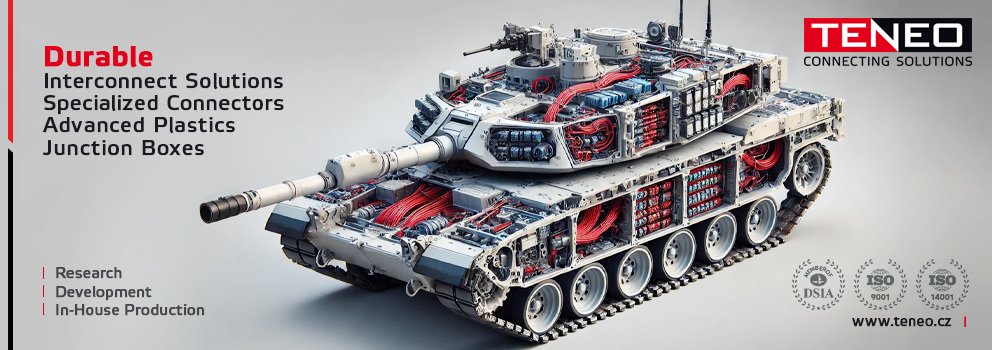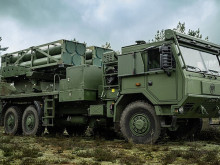Modernization of NATO defense capabilities as a technological response to geopolitical challenges
The North Atlantic Treaty Organization (NATO) is undergoing an unprecedented technological transformation in response to escalating geopolitical tensions and Russian aggression against Ukraine. Key pillars of this modernization include advanced cyber defense systems, artificial intelligence for data analysis and autonomous systems, the development of hypersonic weapons and countermeasures, the expansion of space capabilities and research into quantum technologies. This comprehensive modernization also includes a reassessment of strategic doctrines, ethical aspects of new technologies, and strengthening international cooperation in research and development. NATO faces the challenge of balancing technological innovation, strategic stability and compliance with international law in an era of rapidly changing security threats.

Russia's aggression against Ukraine acts as a catalyst for a rapid transformation of defense strategies and investment in military technology within NATO. This situation calls for a comprehensive reassessment of existing approaches to defense and security, with an emphasis on innovative technological solutions, international cooperation and adaptation to new forms of warfare, including hybrid threats and cyber-attacks.
Founded in 1949 as a defense pact of Western democracies, NATO has undergone several major transformations since its inception. The end of the Cold War brought a period of relative calm and a reorientation towards operations outside member states' territories, which was disrupted by the terrorist attacks of 11 September 2001 and the subsequent global war on terror.
The current geopolitical situation, characterised by the return of power politics and Russia's aggressive behavior, represents a new era of challenges for the Alliance. As Ian Lesser, Vice President of the German Marshall Fund, notes, "NATO faces the most complex security environment since the end of the Cold War, with threats ranging from conventional military confrontations to sophisticated cyber attacks."
Russia's annexation of Crimea in 2014 and its subsequent support for separatists in eastern Ukraine were the first signals of a change in the security paradigm in Europe. The full-scale invasion of Ukraine in February 2022 then definitively ended the post-Cold War era and re-emphasised the importance of collective defense as NATO's primary mission.
According to a 2023 RAND Corporation study, Russian aggression against Ukraine represents the most serious military threat to European security since the end of the Cold War and requires a fundamental rethinking of the Alliance's defense strategies.
Modernization of NATO conventional forces
In parallel with investments in advanced technologies, the Alliance is significantly modernizing its conventional military capabilities. This modernization focuses on several key areas:
Ground Forces:
- Development of a new generation of infantry fighting vehicles with advanced protection systems and networking capabilities;
- Modernization of tank forces, including the integration of active protection systems and advanced sensors;
- Implementation of modular and light armored vehicles to enhance strategic mobility.
Aviation:
- Integration of 5th generation fighters (e.g. F-35) into the air forces of Member States;
- Development and deployment of advanced unmanned aerial systems (UAS) for reconnaissance and combat missions;
- Modernization of air defense systems, including the integration of short, medium and long range systems.
Navy:
- Strengthening anti-submarine capabilities, including the development of a new generation of frigates and torpedoes;
- Modernization of sea lane control and anti-ship missile systems;
- Development of autonomous maritime reconnaissance and mine clearance systems.
Special Forces:
- Investment in advanced personal equipment, including exoskeletons and night vision systems;
- Improved capabilities for rapid deployment and operations in extreme environments.
Command, Control, Communications and Intelligence (C3I):
- Implementation of advanced networked systems to improve situational awareness and coordination among various components;
- Development of robust communications systems resilient to jamming and cyber attacks.
This comprehensive modernization of conventional forces is designed to enhance interoperability among NATO member states, improve the ability to respond rapidly to crisis situations and maintain the Alliance's technological superiority in a changing security environment.
NATO technology development priority areas
Cyber Defence: NATO is significantly strengthening its cyber defence capabilities in response to growing threats in cyberspace. According to NATO's official 2016 "Cyber Defence Pledge" document (updated in 2021), the Alliance has committed to "strengthening and expanding the cyber defence of national networks and infrastructure as a priority task."
Specific initiatives include:
- Establishment of a Cyberspace Operations Centre (CyOC) within the NATO Command Structure in 2018;
- Implementation of a Rapid Reaction Team (RRT) system to respond to cyber attacks;
- Development of advanced tools for detection and prevention of cyber attacks using machine learning and artificial intelligence technologies.
Professor Thomas Rid of Johns Hopkins University warns, "NATO's cyber defenses must be able to counter not only direct attacks on critical infrastructure, but also sophisticated disinformation campaigns and operations aimed at undermining trust in democratic institutions."
Artificial Intelligence (AI) and machine learning: NATO is investing in the development of AI systems for big data analytics, predictive conflict modeling, and autonomous systems. In 2021, the Alliance adopted its first AI strategy, which emphasizes the need for "responsible development and deployment of AI in line with the Alliance's values and legal obligations."
The main areas of application of AI in NATO include:
- Big data mining to improve situational awareness and decision making;
- Development of autonomous systems for reconnaissance and logistics;
- Predictive maintenance of military equipment to enhance operational readiness.
Mariarosaria Taddeo, a researcher at the Oxford Internet Institute, warns, "While AI offers significant military advantages, its deployment also brings new ethical and legal challenges that NATO must actively address."
Hypersonic weapons: in response to Russia's development of hypersonic missiles, NATO is accelerating its own research and development of these advanced weapon systems. According to a Congressional Research Service report, "the development of hypersonic weapons represents a potential paradigm shift in strategic deterrence and precision strike capabilities."
NATO focuses on:
- Development of defence systems capable of detecting and intercepting hypersonic missiles;
- Research on indigenous hypersonic weapons to maintain strategic parity;
- Developing new doctrinal approaches to incorporate hypersonic capabilities into the Alliance's defense strategy.
Space technology: in 2019, NATO officially recognized space as an operational domain, reflecting the growing importance of space capabilities for modern warfare. The Alliance is strengthening its capabilities in satellite communications, reconnaissance and navigation, with an emphasis on resilience to jamming and cyber-attacks.
Key initiatives include:
- The creation of a space centre in Ramstein, Germany, to coordinate the Alliance's space activities;
- Development of a new generation of satellites with advanced encryption and jamming capabilities;
- Working with the commercial sector to develop innovative space technologies.
Executive Director Jana Robinson of the Prague Security Studies Institute notes: "NATO's ability to protect and exploit space systems will be critical to maintaining military superiority in future conflicts."
Quantum technology: research in quantum cryptography and quantum sensors has the potential to revolutionize the way we secure communications and detect threats. The NATO Science & Technology Organization (STO) has identified quantum technologies as one of the key areas for future defense applications.
Specific areas of interest include:
- Quantum cryptography for unbreakable communications;
- Quantum sensors for high-precision navigation and detection;
- Quantum computers for complex simulations and cryptanalysis.
Professor Alexander Lvovsky of the University of Oxford points out that "Quantum technologies can provide NATO with unprecedented advantages in secure communications and detection, but their full potential will require long-term investment and international cooperation."
Current weapons programmes of key NATO members
The response to the changed security situation in Europe is reflected in the intensive weapons programmes of individual NATO member states:
United States of America
- Continued modernization of the nuclear triad (new Ground Based Strategic Deterrent intercontinental ballistic missile program, development of the B-21 Raider bomber);
- Investment in hypersonic weapons (AGM-183 ARRW and Operational Fires programmes);
- Development of a new generation of infantry fighting vehicles under the Optionally Manned Fighting Vehicle program.
United Kingdom
- Increase defense spending by £16.5 billion over the period 2021-2025;
- Naval modernization programme, including the construction of Type 26 and Type 31 frigates;
- Investment in cyber capabilities and Space Command.
France
- Modernization of nuclear forces, including the development of a new submarine-launched ballistic missile (M51.3);
- Scorpion programme to modernise the ground forces, including new Griffon and Jaguar armored vehicles;
- Development of a new generation of fighter aircraft under the Future Combat Air System (FCAS) programme.
Germany
- Increase the defense budget to 2% of GDP by 2024;
- Acquisition of new F126-class multipurpose frigates;
- Modernization of the tank force, including upgrading Leopard 2 tanks to the A7V version.
Poland:
- Ambitious modernization programme to achieve defense spending of 2.5% of GDP by 2024;
- Acquisition of Patriot and IBCS air defense systems;
- Purchase of 32 F-35A fighters and modernization of tank forces (Wilk programme).
Italy
- Development of a new Doha-class light frigate in cooperation with Qatar;
- Modernization of the Air Force, including the acquisition of F-35 fighters and the development of the Piaggio P.2HH combat drone.
Netherlands
- Investment in cyber capabilities and electronic warfare systems;
- Naval modernization, including the acquisition of new anti-submarine frigates.
Turkey
- Domestic development of the Altay main battle tank;
- Continued development of drones, including the Bayraktar TB2 and Akinci armed drones.
Canada
- Navy modernization program including the construction of 15 new Canadian Surface Combatant class frigates;
- Planned acquisition of 88 new fighter aircraft under the Future Fighter Capability Project.
These weapons programmes reflect NATO member states efforts to strengthen their defence capabilities in response to the changing security environment, with an emphasis on interoperability, modernization of key systems, and investment in new technologies.
The importance of modernization of the weapons arsenal and current trends
Continuous modernization of the weapons arsenal is key to maintaining effective defense capability in a rapidly changing security environment.
Current trends in the modernization of weapons capabilities include:
- Digitalization and Network-Centric Warfare;
- Integration of artificial intelligence into decision-making processes and autonomous systems;
- Development of hypersonic and precision-guided weapons;
- Strengthening resilience to cyber-attacks and electronic warfare;
- Implementation of energy-efficient and environmentally friendly technologies;
- Use of additive manufacturing (3D printing) for rapid production of spare parts;
- Development of multifunctional platforms capable of operating in multiple domains;
- Integration of commercial technologies into military systems (e.g. use of 5G networks);
- Increased emphasis on space capabilities, including anti-satellite systems;
- Development of systems to detect and neutralize unmanned aerial vehicles.
These trends reflect the drive to create more flexible, resilient and effective armed forces capable of countering a wide range of current and future threats. At the same time, they place high demands on personnel training, cybersecurity and the ethical aspects of deploying new technologies in conflict situations.
Conclusion
The modernization of the weapons arsenal of NATO and its member states represents much more than a mere response to current geopolitical challenges; it heralds a fundamental transformation of the very concept of defense in an era of technological singularity. This new defense architecture is characterized by a blurring of the boundaries between man, machine, and cyberspace, where cognitive warfare, quantum superiority and bio-cyber integration define a new battlefield. The mass deployment of autonomous swarm systems, the expansion of defense considerations beyond Earth, and neuro-ethical dilemmas are creating unprecedented technological, ethical, and strategic challenges. In this context, adaptive resilience and the ability to adapt quickly are becoming key attributes of a successful defense strategy. Thus, the Alliance and its members face the challenge of not only investing in advanced technologies, but also actively shaping global norms for their ethical use. Success in this new paradigm will depend on the ability to integrate technological innovation with deep strategic wisdom, international cooperation, and respect for human rights, with the Alliance's real strength lying in its ability to use technological advances to promote peace and stability on a global scale.
























